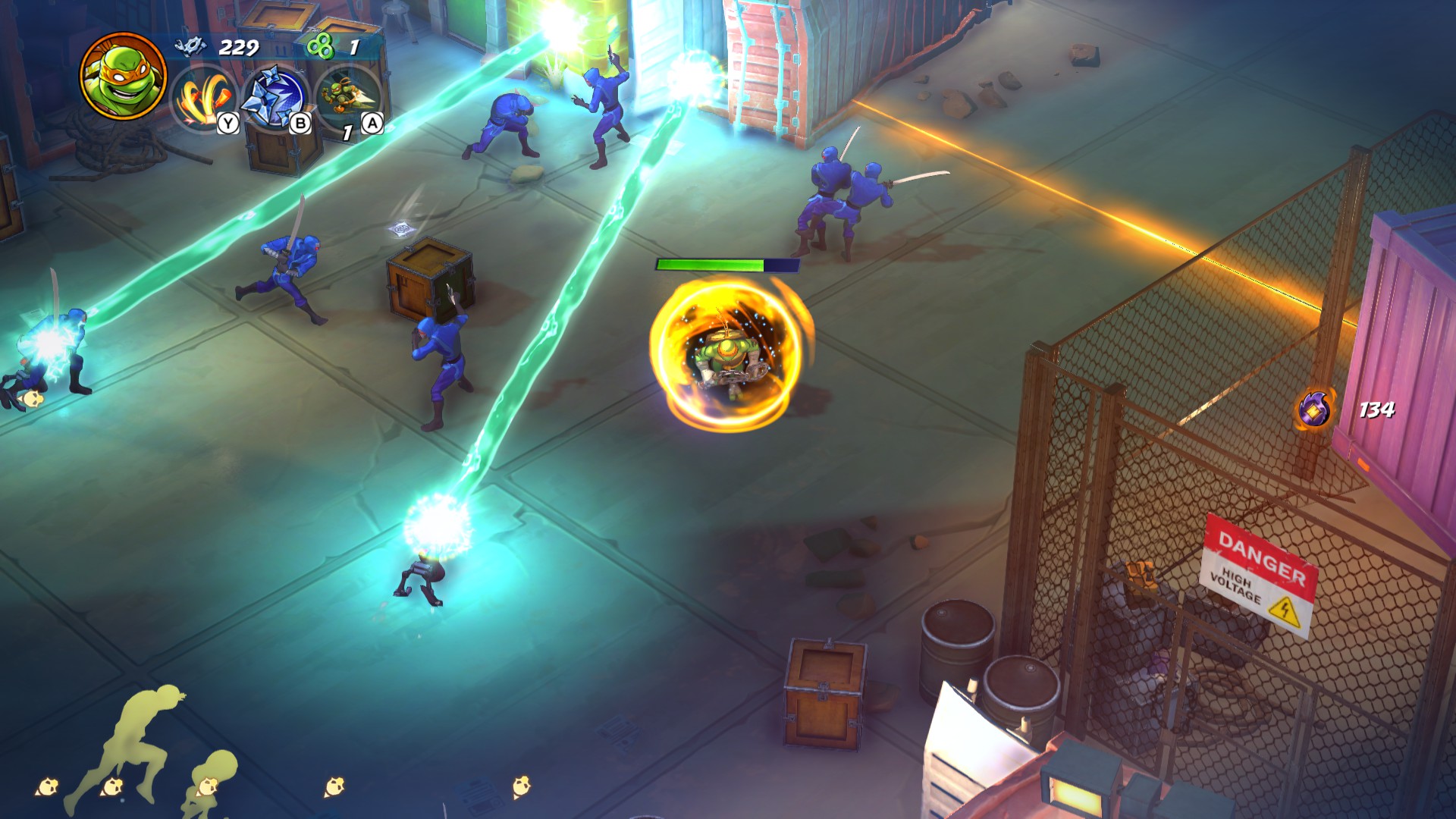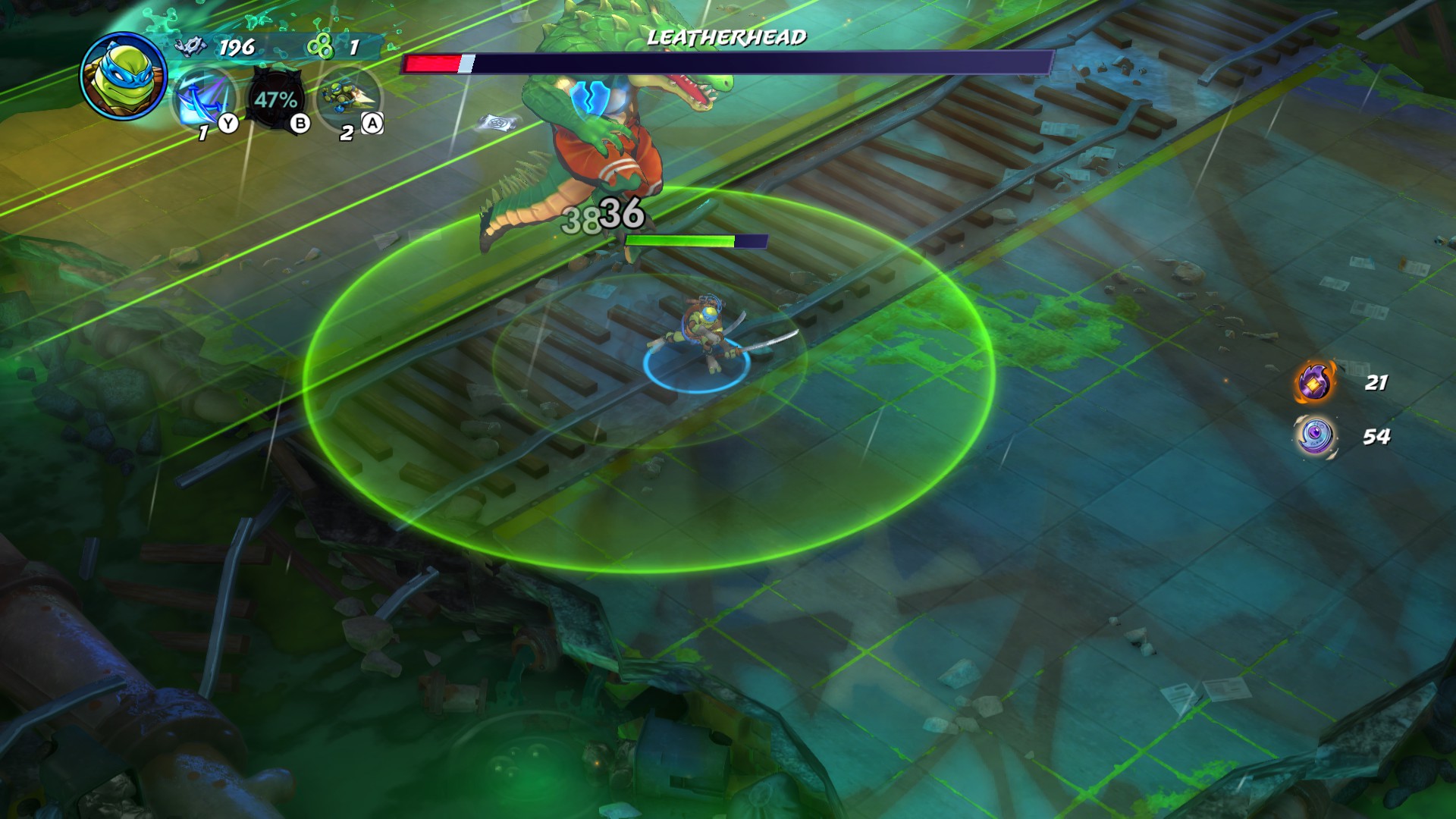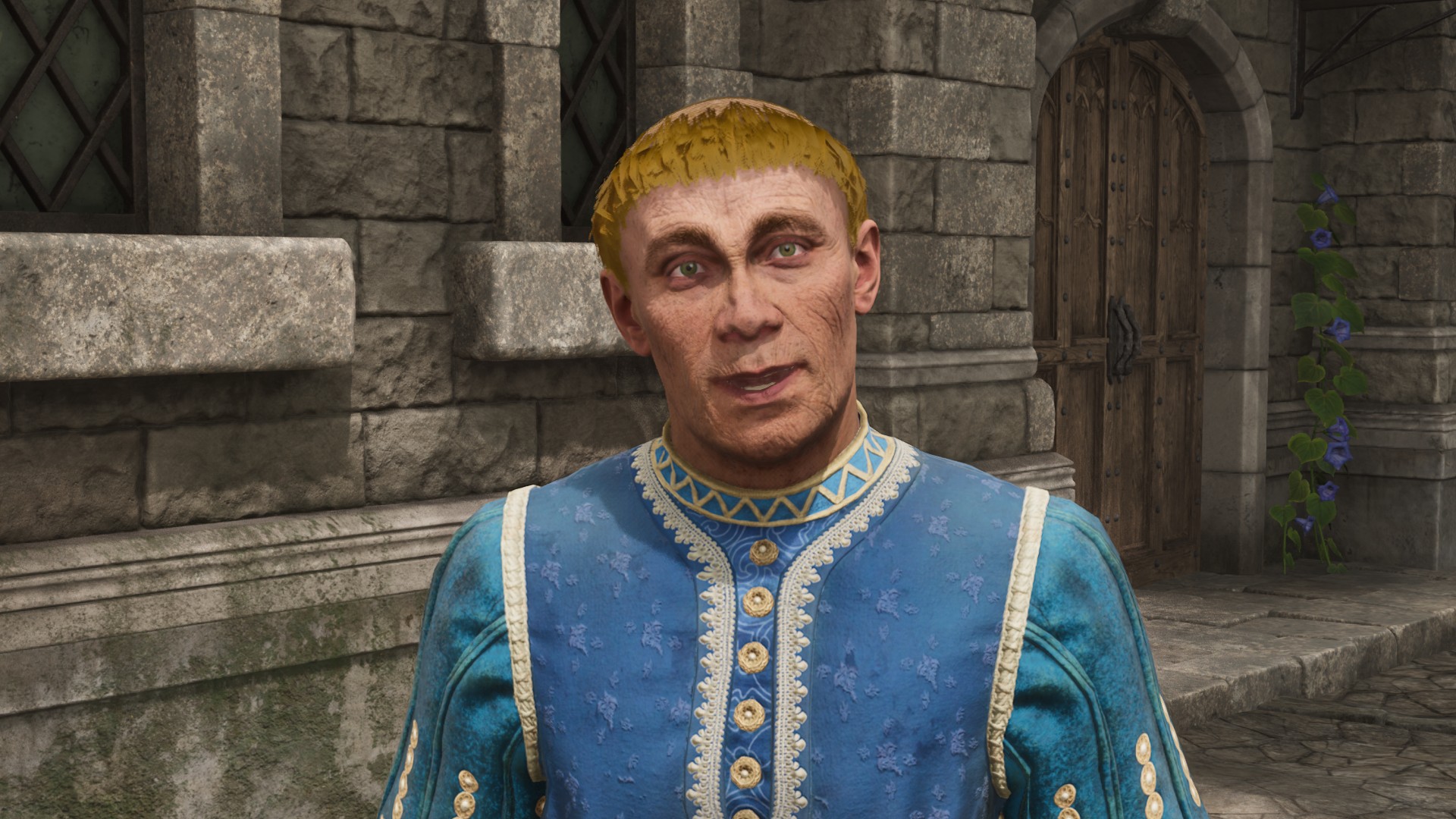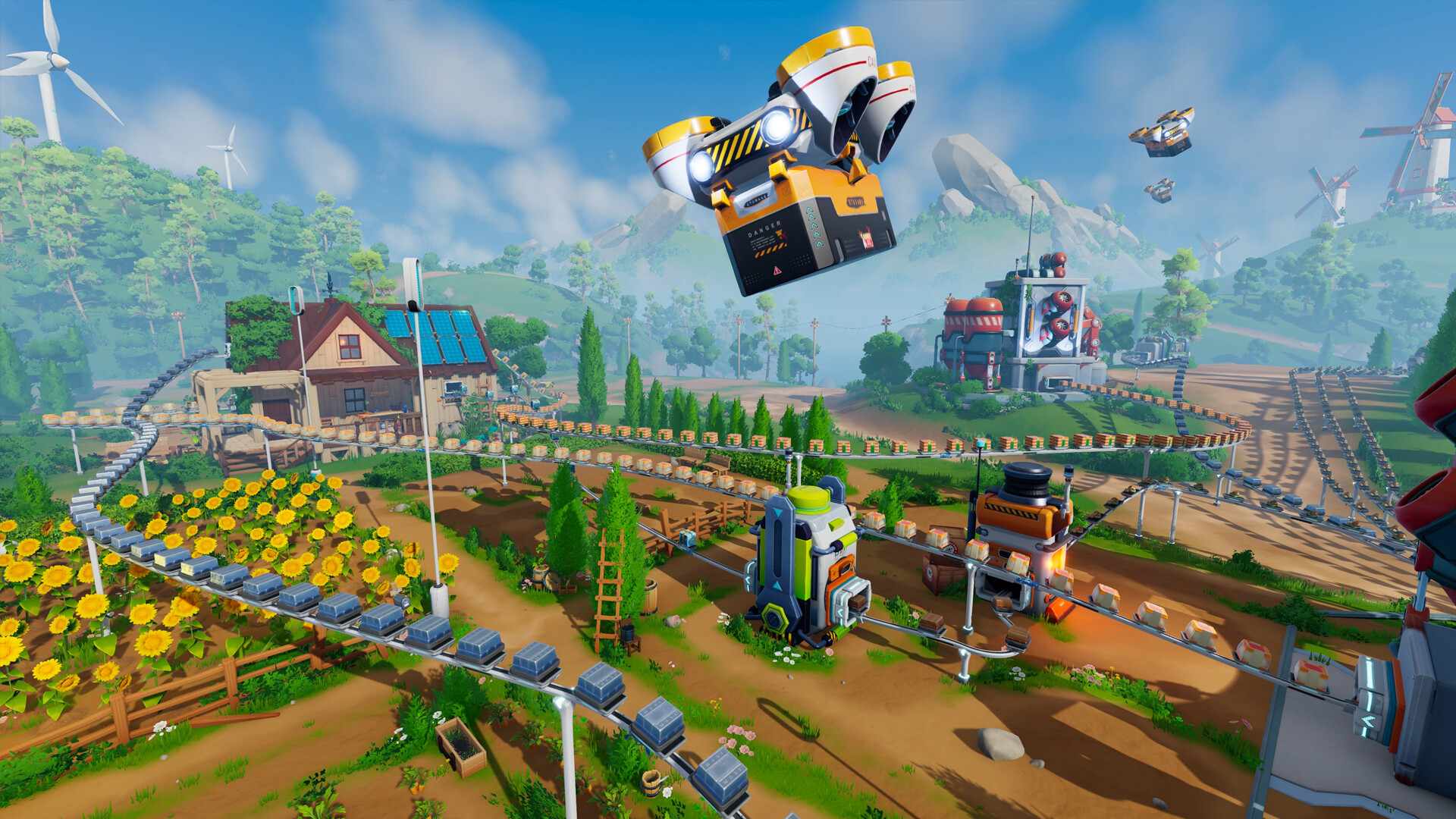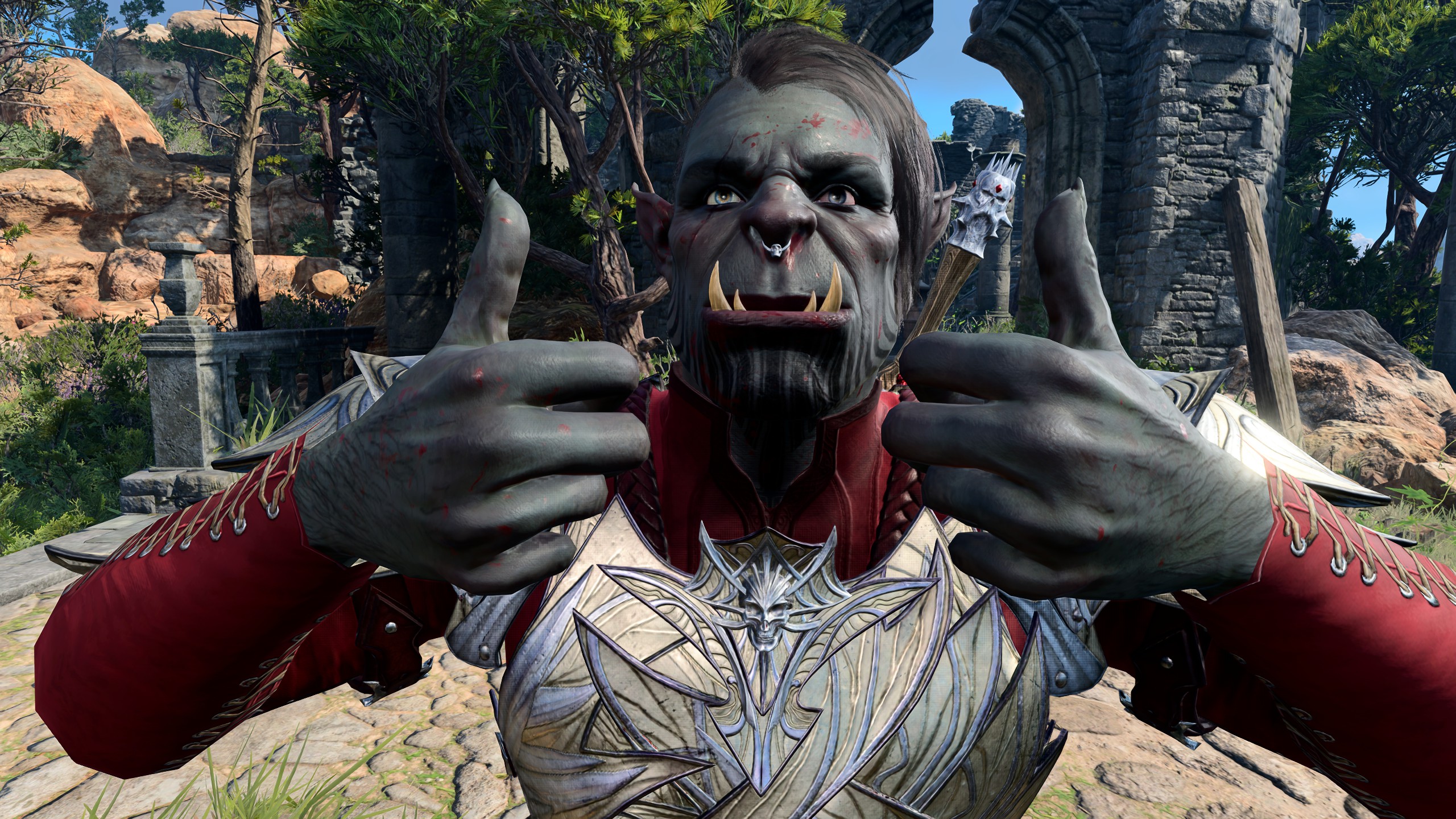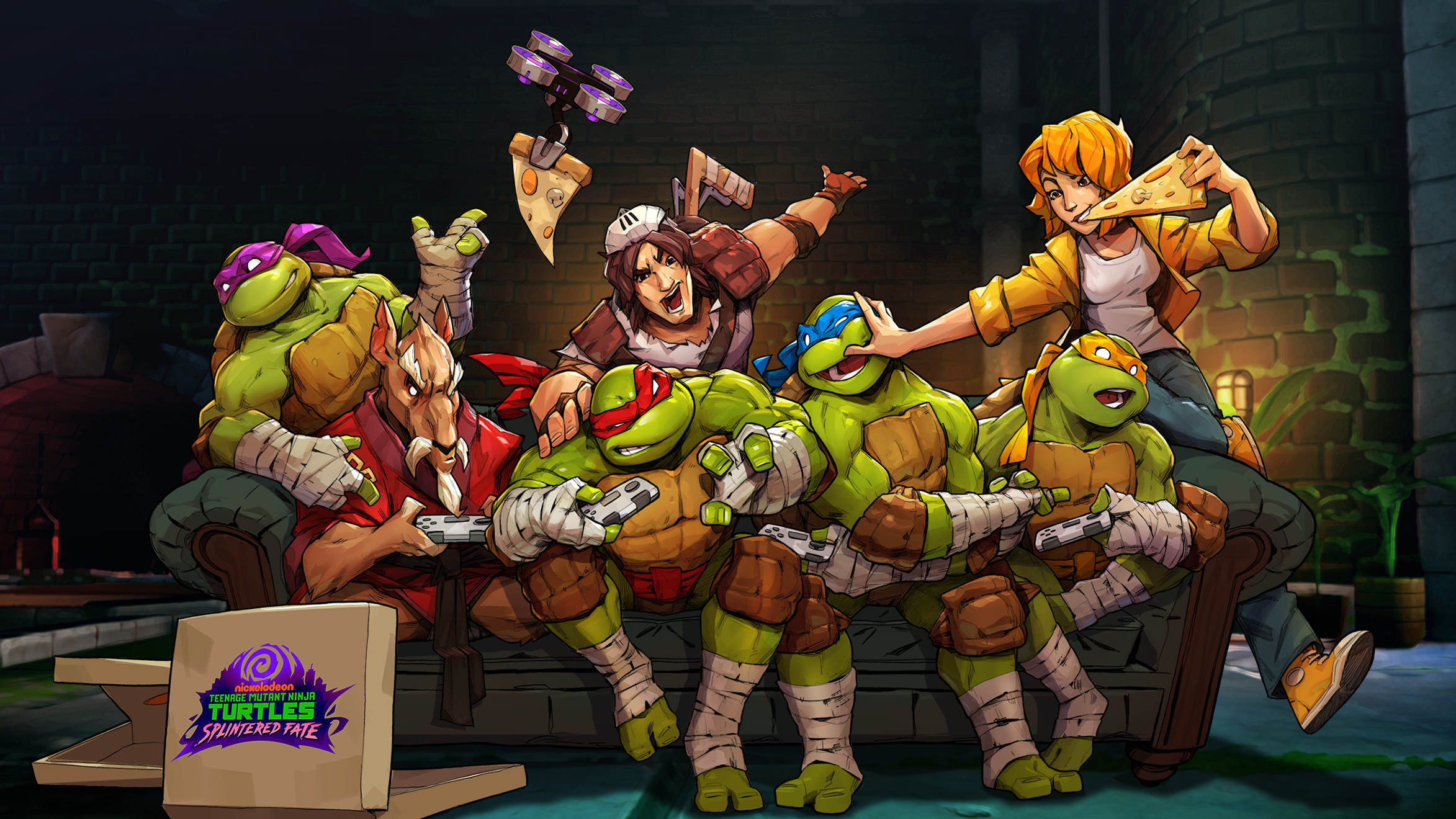
A charmingly energetic mutation of the action roguelike formula.
What is it? A Hades-aping action roguelike starring your favourite sewer-dwellers.
Release date November 6, 2024
Expect to pay $30/£24
Developer Super Evil Megacorp
Publisher Super Evil Megacorp
Reviewed on Nvidia Geforce RTX 3080, AMD Ryzen 9 5900X, 32GB RAM
Steam Deck Verified
Link Official site
Where would your expectations usually lie for a licensed Teenage Mutant Ninja Turtle game? How about if I told you it’s an obvious Hades clone? Right, here’s the kicker—what if it was a port of a mobile game, from a developer that’s never put a game on Steam before? Now your hopes are at rock bottom, here’s the big reveal: Splintered Fate is actually really fun!
To call it a pleasant surprise would be an understatement. Splintered Fate has its rough edges, and certainly doesn’t surpass its inspirations. But it’s a clever take on the formula with lots of ideas and personality of its own, and despite its origins, it looks and feels great on PC.
For those for whom “it’s basically Hades” isn’t a meaningful description: Splintered Fate is a top-down action roguelike. Each run sees you progressing through four biomes one room at a time, each ending in a boss fight. Clearing a room earns you rewards to enhance your character—particularly powers drawn from one of a variety of elemental types, which add new passive effects to your arsenal of attacks and abilities.
The further you progress, the more elaborate the combinations and synergies you’re able to build up, until you hit the final boss and get to test just how strong you’ve managed to get. At the end of each run, successful or not, you keep some resources you’ve earned, which you can then spend on permanent bonuses to carry with you into subsequent runs.
Immediately this familiar set-up is given a bit of new life just through the change in setting. After countless fantasy roguelikes, it’s refreshing to battle through modern city streets and across New York rooftops, fighting Mousers and the Foot Clan and unlocking powers with elements like “Ninja”, “Utrom”, and “Ooze”. As ever, the TMNT concept is endlessly flexible—just as the movies, cartoons, and comics flit easily between tones and art styles, so the setting feels just as natural for this genre of game as it did for side-scrolling brawling in Shredder’s Revenge.
Builds quickly become a blend of chaos and precision, rewarding good play but also evoking the wackiness of a world where a talking rat is the straight man.
It’s more than just a cosmetic choice—Splintered Fate plays up to the elements that make the setting so enduring. Each run, you can choose which turtle to play as, and of course each has their own distinct playstyle via their passive abilities, special attack, and starting Tool (a ninja weapon or gadget, like a smoke bomb or a force field generator). As you progress, you can gain a handful of that turtle’s unique Masteries—upgrades that lean into their approach and favoured elements.
But you can also gain a small number of Inspirations—Masteries borrowed from other turtles that let you swing in unexpected directions, reflecting how the brothers lean on each other to prevail. Raphael, for example, is the master of critical hits, with a passive bonus to crit chance and crit damage. Grab one of his Inspirations on Mikey, however, and you can combine some of that crit power with the much wider sweep of Mikey’s nunchuk attacks, for a crowd-clearing hybrid of the two.
The game is generous with its powers, and unafraid to get weird with their effects. Builds quickly become a blend of chaos and precision, rewarding good play but also evoking the wackiness of a world where a talking rat is the straight man. Whether you’re hurling shurikens in every direction that ricochet among enemies, electrocuting them as they go, spreading contagious toxic goop while you dash around reflecting projectiles back into people’s faces, or causing fire explosions with every sweeping, 100% crit chance attack (that also inflicts water damage, an ice debuff, and a dark magic curse), there’s no sense of restraint here. Some roguelikes seem to snarl at you and say “Come at me, if you think you’re hard enough”. Splintered Fate feels like it’s saying “Radical build, dude!” every time you clear a room.
Remember your training
Importantly, though, while your builds can get very ridiculous, they’re never allowed to get boring. In so many roguelikes, combat gets less interesting the better your build, as you increasingly focus on spamming one overpowered attack or ability and ignore the rest of your arsenal. Splintered Fate neatly dodges this problem by mostly ditching cooldowns. Instead of being on timers, your special attack and Tool are charged up only by hitting with your normal attacks.
Add to that various powers that trigger only on the third hit of your attack string, and the result is that the fundamentals of combat stay relevant throughout a run. You always have to be looking for your opportunities to dash in, weaving past AOE attacks and projectiles to unleash a quick strike, and those precious moments where you can risk a full combo of hits before retreating to relative safety. You’re never resting on your laurels.
That balance of control and chaos is heightened further in co-op. Of course a TMNT game had to let you get all four turtles on screen at once, but multiplayer also gives the game a unique selling point over its genre rivals. You can play both locally and online, and it’s agreeably easy to jump into a random lobby if you don’t have anyone to play with.
With enemy numbers and stats ramped up, and four ridiculous builds popping off at once, co-op is mayhem—but there’s also a real sense of the turtles’ brotherly camaraderie as you play off each other. As long as one of you survives to clear a room, anyone who died is resurrected—I’ve already had more than a few moments of sweatily cheering on some online stranger while my turtle lies in a heap, and celebrating as they pull off the seemingly impossible.
There’s nowhere to view a summary of your character stats during a run, leading to far too much guesswork and estimating.
While runs start off pretty approachable—it won’t take genre veterans long to reach and defeat the final boss—you’re soon able to ramp up the challenge with Portals (jump through them to increase both the difficulty and the reward) and Gauntlets (intimidatingly beefed up versions of boss and miniboss fights). In solo play, it’s a lovely bit of risk/reward, pushing you to see exactly how tough a run you can beat, and tempting you to put a particularly gnarly build through its paces. In multiplayer, it’s an opportunity for bravado, egging each other on to ever more ridiculous levels until you crash and burn—or incredulously beat the odds.
There are certainly rough edges here, however. Those used to the slick presentation of Hades will find Splintered Fate’s menus a bit lacking—both in ease of use, and information. There’s nowhere to view a summary of your character stats during a run—such as your current dodge chance or total damage bonus—leading to far too much guesswork and estimating in what should be a precise process. Similarly there’s no record of powers and their prerequisites to allow you to plan out a build in advance, which proves particularly frustrating in the case of the very useful hybrid powers unlocked by combining elemental types. I’ve found many during my runs, but never had any idea which specific combinations of powers allow them to appear, and there’s no way to check which I’ve seen and which I haven’t.
As in Hades, bosses have different variants to keep them fresh over multiple runs (on top of the scary Gauntlet versions), but it’s oddly inconsistent. Why are there four versions of the first boss, but only one of the third? Some variants also feel wildly harder than others, which can feel unfair given the seeming randomness of which you’ll get. And the final boss’s six different forms are so functionally identical to each other that I’ve wondered if they’re actually bugged and not enacting their full range of attacks.
A goofy Mikey to Hades’ disciplined Leonardo, but a member of the clan none the less.
While Splintered Fate certainly gets the turtles, with a charming version of the setting clearly inspired by the slightly less goofy and more violent IDW comics (they’re great, give ’em a read), constant quipping among the characters and over-explaining of the fairly simple plot can get exhausting. The personalities of the core cast shine through brightly, but too often in the form of tortured puns or repetitive banter that wasn’t funny the first time.
Beyond that, there are simply a lot of little flaws. Visual bugs, a confusing array of meta-currencies, slightly unclear power descriptions… nothing that will ruin a run, but enough to give the sense of a much less polished product than the game that it cannot possibly escape comparison to.
It doesn’t fully transcend its slightly suspect origins, then—but I’ve still had substantially more fun with Splintered Fate than I expected to. It certainly earns a place in the stable of action roguelikes—perhaps more a goofy Mikey to Hades’ disciplined Leonardo, but a member of the clan none the less. I already beat it on Switch before starting afresh on PC for this review, and after I finish writing I’ll be back in once again, so clearly, despite my criticisms, there’s a compelling core experience here. And with the developer promising further updates, including new playable characters, levels, bosses, and more, it seems to have a bright future ahead of it too. Radical game, dude!

